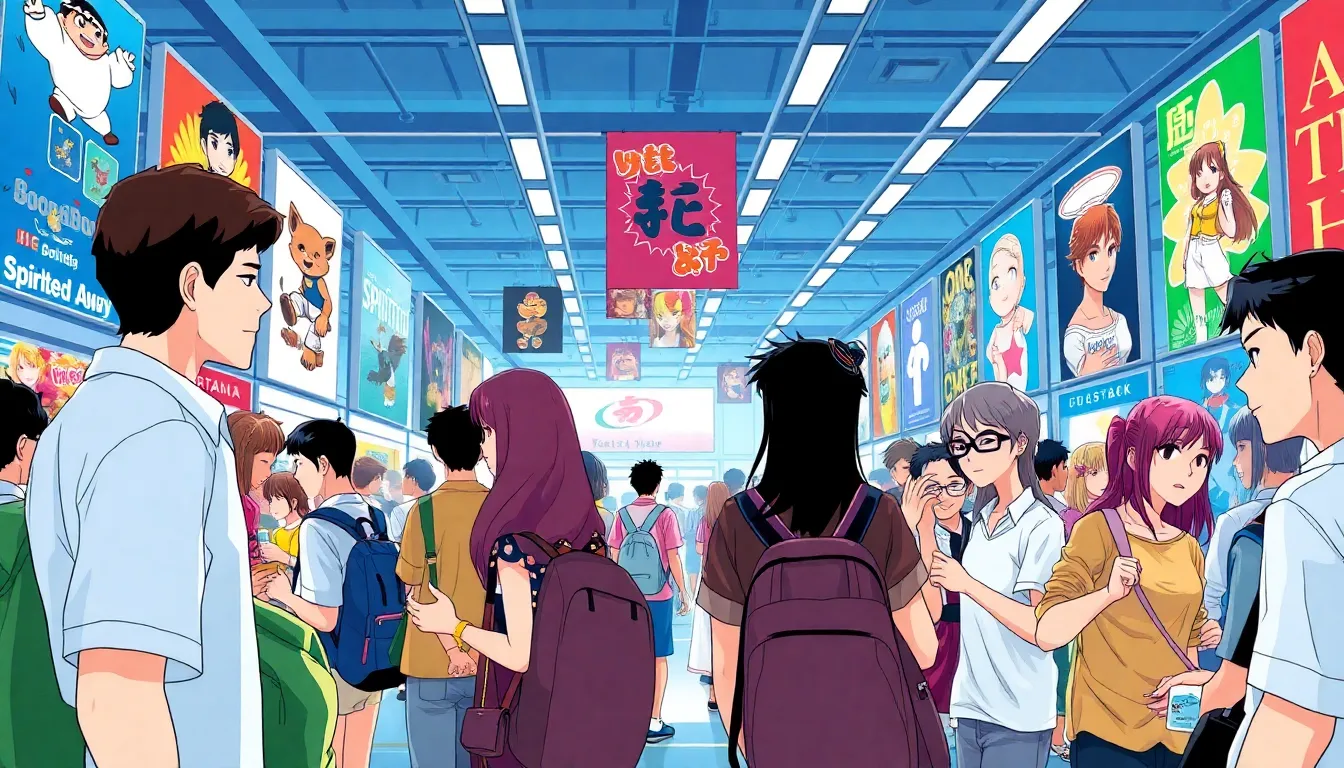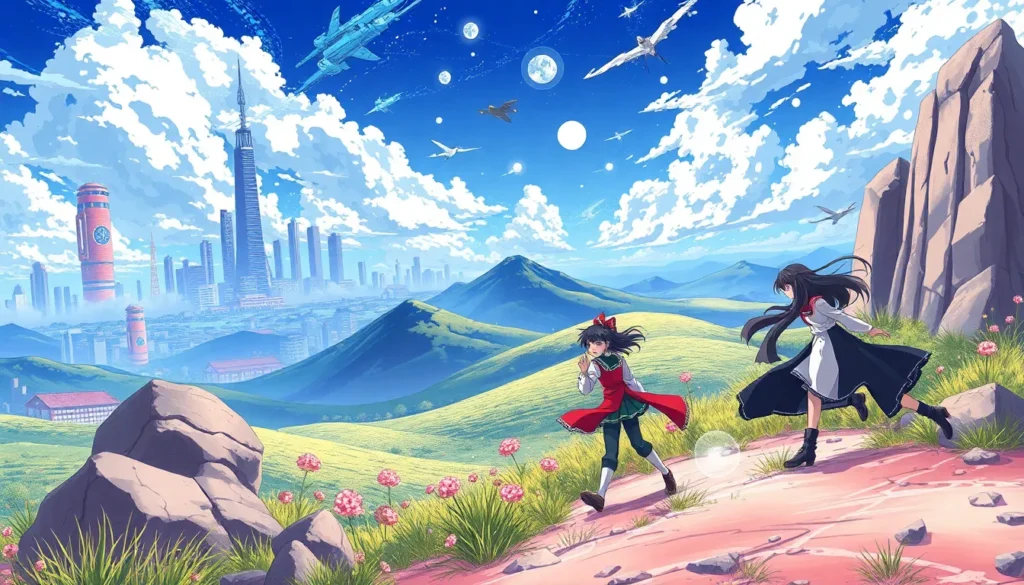Anime classics are like the timeless treasures of the animation world, captivating audiences with their unforgettable stories and stunning visuals. From epic battles to heartwarming friendships, these shows have a unique ability to transport viewers into fantastical realms where anything is possible. Whether you’re a seasoned otaku or just dipping your toes into the anime pool, these classics are a must-watch.
Anime Classics
Anime classics stand out due to their defining impact on the medium and culture. These series and films often explore profound themes while captivating audiences with unique animation styles. Notable titles include Akira, which revolutionized the genre by introducing cyberpunk aesthetics and complex narratives.
Storytelling in anime classics frequently combines drama and adventure. Spirited Away, for example, showcases a young girl’s journey through a mystical realm, emphasizing self-discovery and resilience. Characters in these stories often become iconic, such as Goku from Dragon Ball Z and Ash Ketchum from Pokémon.
Cinematic techniques also play a significant role in elevating these works. Techniques like fluid animation, atmospheric soundtracks, and emotional voice acting create immersive experiences. The artistry contributes to the emotional weight of narratives, making them memorable for audiences.
Cultural influence arises from these classics, inspiring countless creators worldwide. They shape trends within contemporary anime, proving their lasting significance. Events, merchandise, and conventions often celebrate these works, showcasing their enduring popularity among fans.
Diverse genres can be found within the classic anime category, catering to various tastes. From romance in Your Name to horror in Another, there’s a classic for everyone. Enthusiasts often cite these shows as foundational, encouraging new generations to engage with anime and explore its vast history.
Defining Anime Classics

Anime classics stand out for their profound narratives and visual artistry. They possess characteristics that resonate with audiences and shape the landscape of animation.
Key Characteristics
Iconic storytelling defines anime classics, featuring rich plots that often delve into complex themes. Memorable characters often embody relatable struggles, capturing viewers’ hearts. Unique animation styles exemplify these classics, showcasing innovative techniques that enhance visual appeal. Emotional soundtracks elevate the overall experience, driving the narrative’s emotional impact. Timeless themes such as friendship, perseverance, and sacrifice frequently emerge, leaving a lasting impression on audiences.
Historical Context
The evolution of anime has seen significant milestones that define classics. The release of “Astro Boy” in 1963 marked a pivotal moment that established the framework for future series. “Akira” in 1988 revolutionized animation with its groundbreaking visuals and storytelling approach, elevating anime to global recognition. Additionally, Studio Ghibli’s “Spirited Away” in 2001 brought attention to the artistic potential of anime, captivating audiences worldwide. These classics not only shaped the medium’s development but also influenced the cultural landscape, inspiring countless creators and spawning trends that persist in contemporary anime.
Iconic Anime Classics
Anime classics resonate with audiences through their unique storytelling and stunning visuals. Timeless themes and relatable characters define this genre, making these works essential for fans of all ages.
Notable Titles
“Akira” stands as a groundbreaking film that transformed the anime landscape with its intricate animation and dystopian narrative. “Spirited Away” captures hearts through its enchanting world and compelling characters, showcasing Studio Ghibli’s artistry. “Cowboy Bebop” combines science fiction and jazz elements, creating a unique atmosphere that leaves a lasting impression. “Your Name” highlights the emotional depth and connection of its characters, illustrating the power of love and fate. “Dragon Ball Z” illustrates epic battles and memorable characters, becoming a staple in the anime community.
Influential Directors
Hayao Miyazaki, co-founder of Studio Ghibli, reshaped anime through films like “Spirited Away” and “My Neighbor Totoro.” His storytelling often intertwines fantasy with deep emotional themes. Satoshi Kon, known for “Perfect Blue” and “Paprika,” pushed boundaries in narrative complexity and psychological exploration. Mamoru Hosoda, director of “Wolf Children” and “The Boy and the Beast,” emphasizes family and personal growth, appealing to diverse audiences. Shinichirō Watanabe, creator of “Cowboy Bebop,” blends genres seamlessly, demonstrating the versatility and creativity within anime.
The Impact of Anime Classics
Anime classics resonate deeply within global culture, shaping artistic expression and storytelling. Their remarkable narratives influence generations of creators and audiences alike.
Cultural Significance
Cultural significance lies at the core of anime classics, transcending boundaries and connecting diverse audiences. Iconic works like “Akira” and “Spirited Away” introduce complex themes such as identity and environmentalism, prompting critical discussions. These shows inspire artists around the world, leaving indelible marks on various media, including film and literature. Festivals and conventions dedicated to these classics celebrate their impact, promoting community and appreciation among fans. Furthermore, these classics often highlight traditional Japanese values, enriching global understanding of Japan’s culture and social issues.
Lasting Legacy
A lasting legacy defines the influence of anime classics in contemporary entertainment. Titles like “Dragon Ball Z” and “Cowboy Bebop” continue to inspire both established and emerging creators. Innovative storytelling and character development in these series set benchmarks, leading to the evolution of anime as a respected medium. Popular trends in current anime often draw from the narratives and styles established in classics, ensuring their relevance. Merchandise, spin-offs, and remakes demonstrate ongoing audience engagement, showcasing how these timeless tales remain integral to pop culture. Consequently, the enduring appeal of anime classics fosters a vibrant community, solidifying their place in the history of animation.
Conclusion
Anime classics hold a special place in the hearts of fans and creators alike. Their ability to tell compelling stories while exploring universal themes ensures they remain relevant across generations. These timeless works not only showcase stunning animation but also foster connections among viewers worldwide.
As new anime continues to emerge, the influence of these iconic titles shapes the landscape of modern storytelling. The legacy of classics like “Akira” and “Spirited Away” inspires both new creators and seasoned veterans, ensuring that the spirit of innovation in anime endures. By celebrating these masterpieces, audiences can appreciate the rich tapestry of emotions and artistry that anime has to offer.

